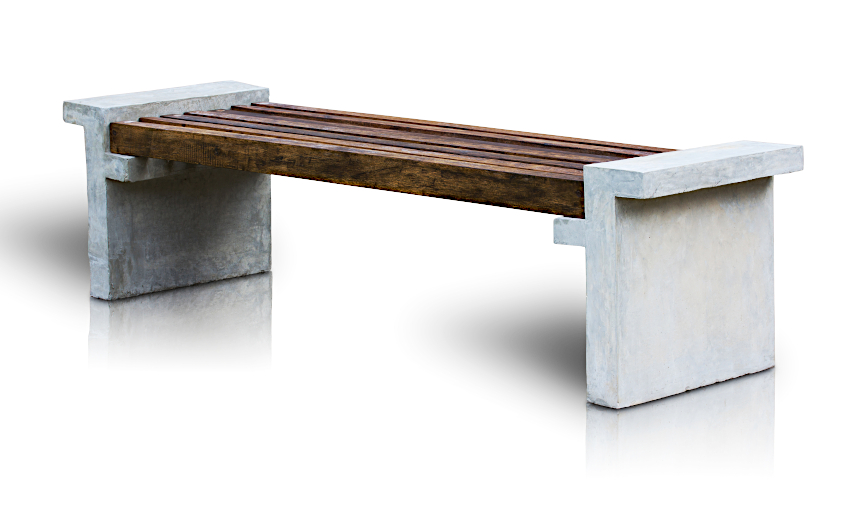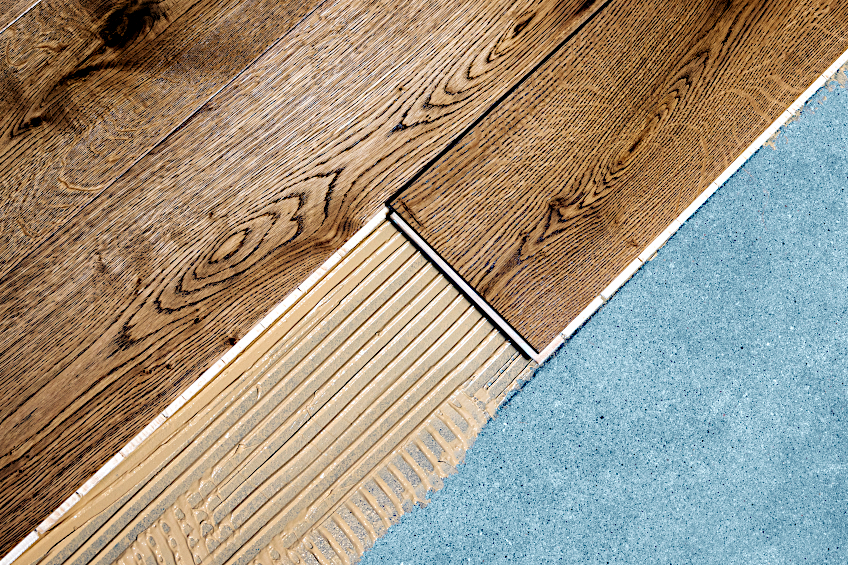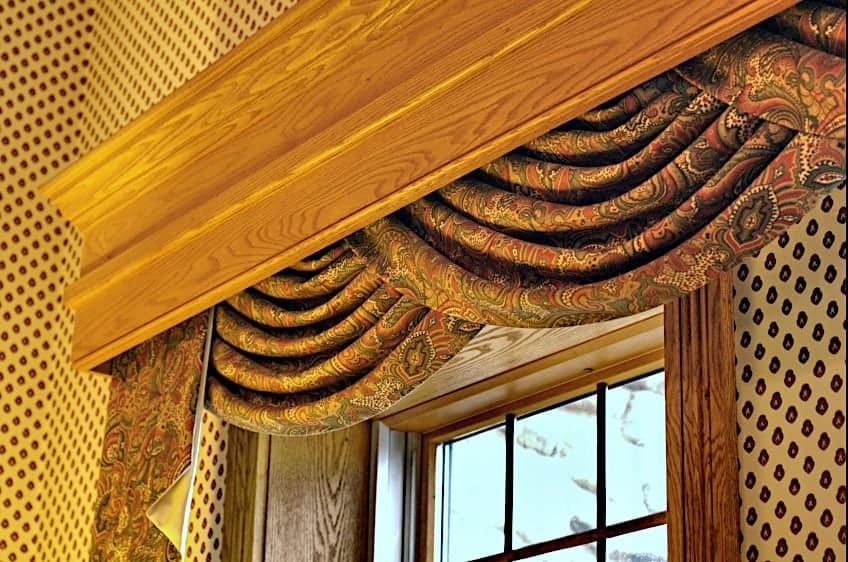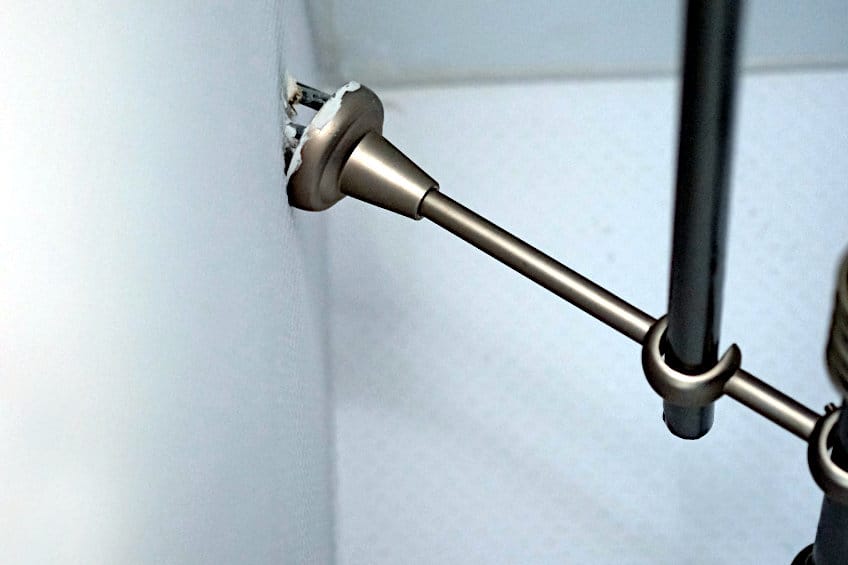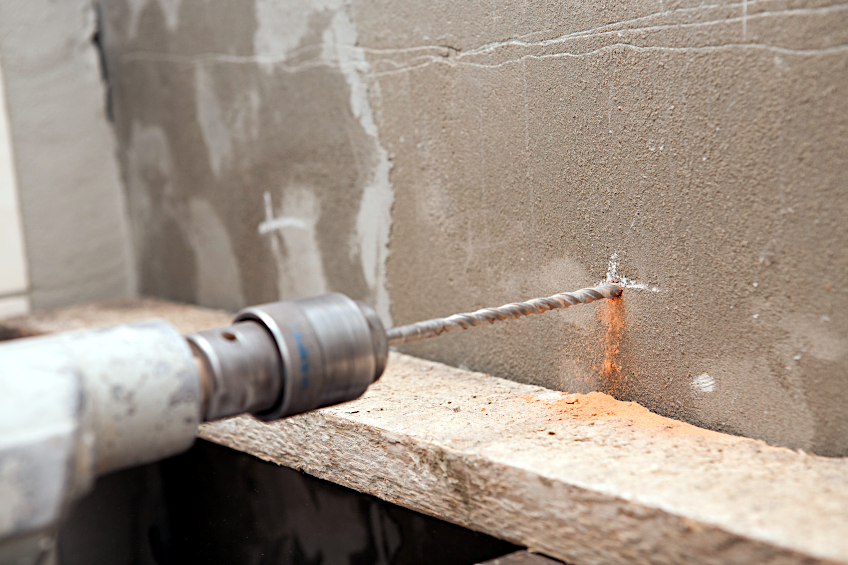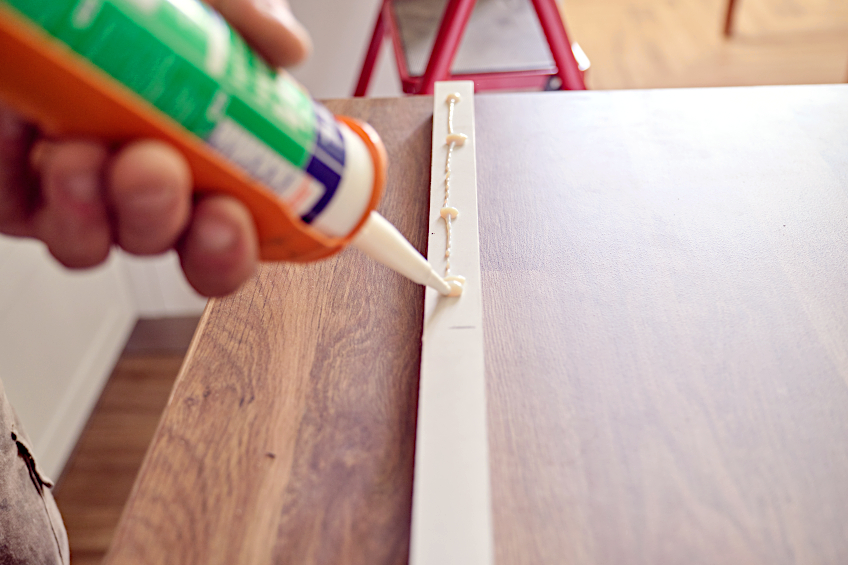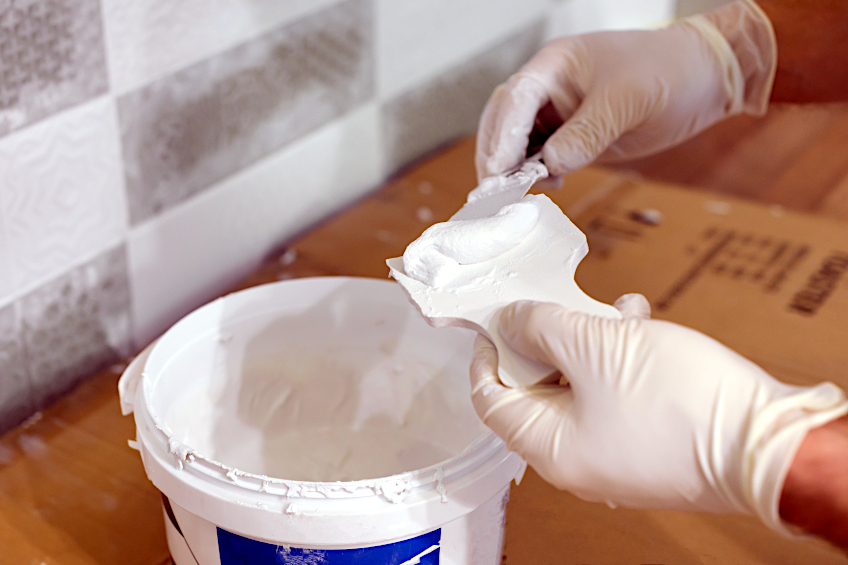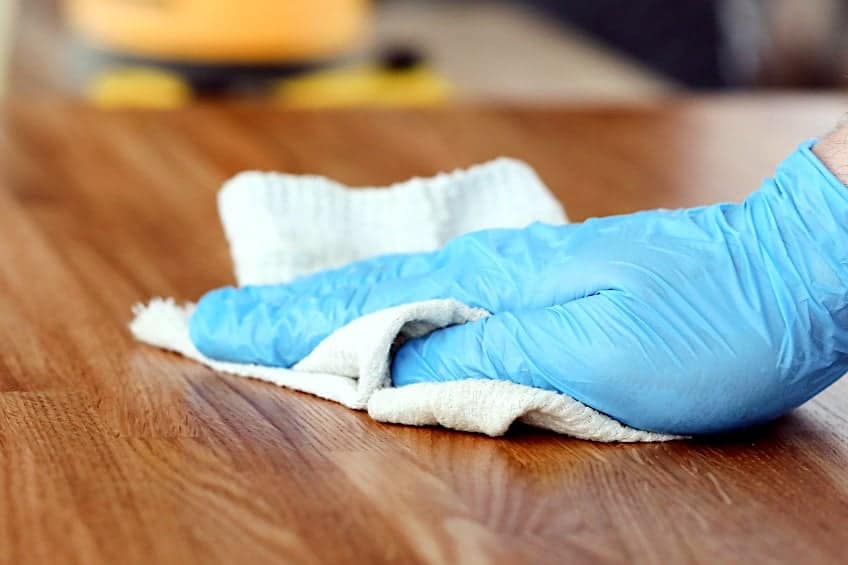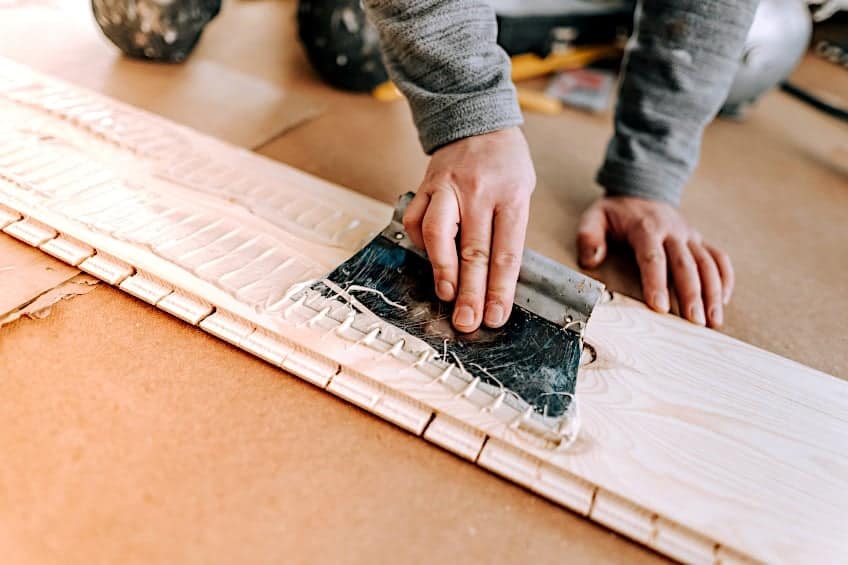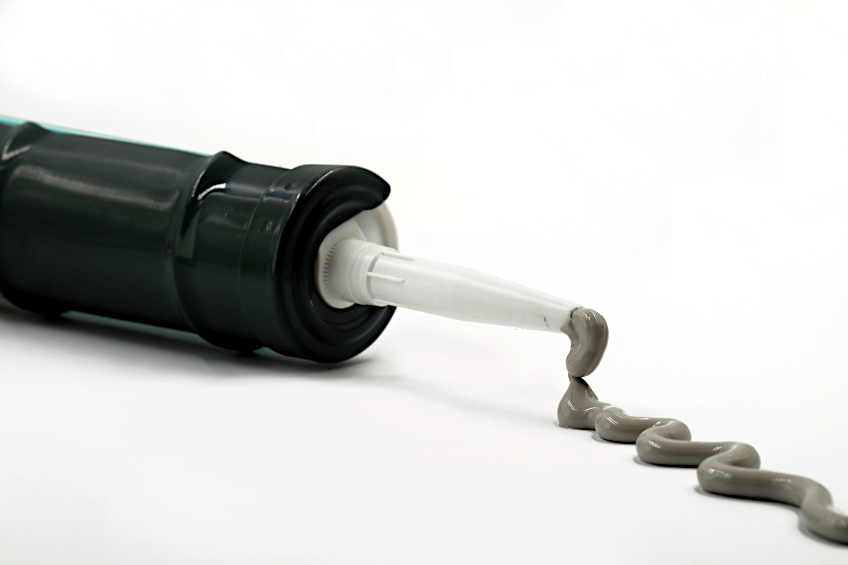How to Glue Wood to Concrete – Best Construction Adhesives
This post may contain affiliate links. We may earn a small commission from purchases made through them, at no additional cost to you. You help to support resin-expert.com
If you’ve remodeled your home or simply installed a shelf in your life, then you know that there are loads of options when adhering things to concrete surfaces. Ever since we’ve had brick homes, we’ve sought ways to secure things to these surfaces in order to prop things up and even move them. Some of the more conventional ways of adhering things to the concrete are via threaded bolts and hooks, and most recently, we’ve taken to using adhesives to adhere things to concrete. One of the most common materials we adhere to concrete is wood, which makes sense since we use it for things like shelving, load bearing, and general construction. This being said, let’s have a look at how to glue wood to cement effectively, what the best adhesives are for the job, why you’d want to, and what some of the pros and cons are of gluing wood to concrete surfaces.
Table of Contents
When Would You Need to Attach Wood to Concrete?
While it might be difficult to think of reasons to attach wood to concrete, there are actually quite a few instances where you’d find yourself needing to. Let’s have a look at a few times that you’d find yourself needing to attach wood to concrete in everyday situations and why wood and concrete tend to make a good pair when it comes to construction applications.
Wooden Flooring
A great example of the perfect marriage between wood and concrete is wooden flooring. While older wooden floors made of solid wood board (like the kind found in colonial structures) are simply placed on bare stone and rely on their weight to keep them in place, these days, solid wood flooring is far less common, and we use engineered woods instead, as they tend to last longer and are easier to replace and maintain.
If you’re wondering how to glue wood to concrete in regard to engineered wood flooring, it’s quite simple. All you need to do is ensure that the flooring and concrete are prepared correctly, apply the adhesive, and stick them down as desired. Most engineered wood flooring boards fit together like puzzle pieces, which makes them easy to fit together, and easier to cut in order to fit a given space.
Wooden Shelving
One aspect of the human experience that seems to have remained consistent is the use and need for wooden shelving. It’s pretty challenging to imagine shelves that aren’t made of wood, and even more so to imagine any shelf that isn’t free-standing that isn’t connected to a wall of some sort. Most walls these days are wooden, but there are some homes and offices that still use integrated wooden shelving units.
This means that the shelving is set into the wall. This is a fairly old method of going about it, with modern solutions instead of using “L” brackets to secure the shelving to the wall. Even more modern (and arguably rare) methods of adhering wooden shelving to the concrete are to use industrial strength adhesives that bond the wood to the concrete surface on a molecular level.
Wooden Frames
One thing that gets adhered to concrete quite often is wooden frames. Whether you’re having a painting, or a few photo frames are a great way to bring attention to these pieces while simultaneously protecting them from potential harm. The trick with adhering wooden frames to concrete is to ensure that the mechanism is capable of holding its weight indefinitely.
As we’re sure you know, nails and hooks are some of the most commonly used methods of adhering wooden frames to concrete, but they tend to leave holes in the concrete, which you will have to fill if you ever decide to change things up.
However, using wood-to-concrete glue to secure hooks (or pins) with a flat base will allow you to adhere your frames to concrete surfaces while retaining the option to remove them at any time with the right solution.
Taxidermy Plaques
If you’re a hunter of small or big game, the thought has probably crossed your mind about immortalizing the remains of some of your more notable kills. If this is the case, the best way to go about it is to mount it on a plaque and place it above a beautiful stone fireplace like a villain in a James Bond movie. All jokes aside, this is one of the best ways to display your hunting trophy.
We would highly recommend that you get your taxidermy done professionally regardless of your own skill level as it can take quite some doing to mount your trophy in a well-balanced way. Once your trophy has been prepared, we recommend using a permanent locking mechanism to secure the wooden plaque to the concrete well such as nails or an industrial strength wood-to-concrete glue.
Wooden Curtain Railings
Curtains are something that is typically changed from season to season, but the rails on which they hang aren’t changed nearly as often. Even though there are more modern materials available these days, it seems that most people prefer the look and feel of wooden curtain railings, and who could blame them? Wooden railings tend to make a space feel warmer and more inviting compared to the cold, clinical feel of metal and plastic alternatives.
There are many ways to adhere wooden curtain railings to concrete walls. The most common way to go about it these days is by using raw bolts or nails, which makes sense considering that the rail will be bearing a constant load. A great alternative to this is to use wood to cement adhesive, which eliminates the possibility of the nails or raw bolts shifting out of the concrete over time.
What Are the Advantages of Using Adhesives Instead of Fasteners?
Why should you use adhesives instead of conventional locking mechanisms? After all, things like nails, raw bolts, and even wooden pegs have been used for hundreds if not thousands of years. Well, for starters, adhesives don’t damage concrete surfaces because they don’t need to penetrate the surface to create a strong bond, which in most instances are capable of bearing medium to heavy loads.
As you’ll see, there are many other reasons that adhesives are objectively superior to mechanical fasteners.
Take Up Less Space
This might seem trivial, but in some instances, you might find yourself without much space to work with. When using mechanical fasteners, you typically need space to line them up and drive them in, and if you’re working in a tight space this might be a taller order. However, if you choose to use an adhesive instead, this problem quickly becomes non-existent.
This is because you aren’t adding any extra material to the wood you’re adhering to the concrete, which brings us to another reason to use adhesives over conventional fasteners. Adhesives weigh significantly less than conventional fasteners, which means that you’re not adding much weight (except that of the wooden object) to your concrete surface.
Improved Durability
Another advantage of using cement glue for wood instead of nails and screws is that adhesives tend to be more durable. Most traditional fasteners are made of metal, which means they’re subject to things like oxidization, metal fatigue, and manufacturing errors. This can lead your wood to eventually fall off your concrete surface without any warning, and if you’re suspending things like paintings and photographs, the damage can be challenging to recover from.
Using a good cement glue for wood, on the other hand, ensures that you have a hard-wearing joining mechanism that isn’t only extremely durable, but probably provides better adhesion too. Most adhesives that are capable of suspending things in this manner need a special solvent to dissolve them, which means that your wooden workpieces won’t be going anywhere anytime soon.
No Drilling or Tapping Required
This is one of the biggest selling points that adhesives have to offer. When using mechanical fasteners like raw bolts you need to drill and or tap recesses that they can be threaded into to ensure that they stay in place. This can be quite the undertaking if you’re suspending large objects, and they will need to be filled if you ever decide to change things up.
This can all lead to loads of dust and dirt, which you’ll need to clean up. If you’d prefer to avoid all of this, you can opt for gluing wood to concrete instead. Using a concrete adhesive means that all you need to do is ensure that each surface is clean, apply your adhesive, and allow it to cure for the manufacturer’s recommended time period. No holes and dust!
Saves Time and Money
As we mentioned previously, using mechanical fasteners takes quite a bit of preparation. Besides drilling and tapping the surface in question you need to ensure that the concrete is strong enough to hold the weight you intend on suspending. All of this can take a considerable amount of time, and if you’re doing it all on your own, quite a bit of money and tools too.
Gluing wood to concrete on the other hand is much easier, and a lot quicker too. Concrete adhesive tends to cost a lot less than the number of fasteners you’d usually need, not to mention the tools you need to use them. All you need is a clean surface and a good-quality concrete adhesive, and you can accomplish a task that would take a day in just a few hours.
What Are the Disadvantages of Using Adhesives Instead of Fasteners?
Unfortunately, there is no such thing as the perfect bonding agent. Just as mechanical fasteners have their disadvantages, so do chemical adhesives like epoxy. This being said, let’s have a look at a few of the more notable disadvantages that adhesives tend to offer and why they aren’t the best choice for certain applications.
Curing Time Can Vary
Curing time is something that needs to be taken into consideration if you’re going to opt for an adhesive. Curing refers to the amount of time it takes an adhesive to form a solid bond with two surfaces and depending on the type of adhesive you’re using, ambient temperature, and the type of surface you’re using it on, curing time can vary considerably. This can quickly become a problem when you don’t have loads of time to work with.
Some adhesives cure instantly so there isn’t a need for clamps or pressure to be applied in general, so it’s best to be sure of the curing time for your chosen adhesive and to ensure that it’s graded for use on both concrete and wooden surfaces.
Temperature Resistance Can Vary
Resistance to temperature is important, especially if you’re going to be using your adhesive to suspend things. When adhesives are in the process of curing, they tend to do poorly when exposed to temperatures that are too high, too low, or in an environment that’s too humid. This can cause the curing process to happen slowly, or if the conditions are especially unfavorable, they won’t cure at all.
Beyond curing, you should always ensure that you know the tolerances of your adhesive. Remember that concrete gets cold in the winter and hot in the summer, and if your adhesive isn’t up to the task, those temperature extremes could cause the adhesives bold to fail. If you’re unsure of the temperature tolerances of your adhesive, be sure to check with the manufacturer, the product’s packaging, and/or online.
They Decay Over Time
Remember that adhesives rely on chemical bonds. Chemical bonds in the adhesive are formed when two parts are joined, usually through a thermoplastic reaction that generates enough heat to create the end product. Once this bond is created, the cured adhesive has successfully formed a bond with the surfaces in question, which is usually really strong and can last for years. However, the strength of this bond can decrease over time. The rate at which it decays depends on environmental factors like unforeseen or sudden increases in stress on bonds.
Even things like UV light and excessive moisture can accelerate this process, so be sure to consider where exactly you’ll be using your adhesives.
They Require a Clean Surface
Unlike when using fasteners, you need to ensure that the surfaces you are working with are clean before using an adhesive. Why? Adhesives need to bond with both the wood and metal on a molecular level. Therefore, foreign particles present when the adhesive is applied will cause an imperfect bond, and/or could prevent the adhesive from curing correctly.
If you’re going to be using an adhesive instead of fasteners, it’s really important that the surfaces you’re bonding are as clean as possible before the adhesive is applied. Both wood and concrete can be cleaned with some soap and water, just be sure to allow both surfaces to dry completely before applying your adhesive to avoid any complications.
Some Contain Harmful Chemicals
For loads of people, the fact that adhesives contain VOCs (volatile organic compounds) is a deal breaker. VOCs are chemicals that are harmful to the environment and can cause serious harm to your respiratory system if inhaled in excess. When using adhesives that contain these types of chemicals it is strongly recommended that you do so in a well-ventilated environment with constant airflow.
This contrasts considerably with mechanical fasteners that won’t cause you any such hassles. There are adhesives that contain little to no VOCs, but they typically aren’t as strong as the types of adhesives that do. If this makes you a bit apprehensive, don’t be. These chemicals are neutralized completely once the glue has had a chance to cure completely, and most are even food safe, so as long as you wear the appropriate gear while handling them, you’ll be just fine.
What Is the Best Adhesive for Wood to Concrete?
Looking for the best adhesive for wood to concrete applications? Choosing an adhesive to bond wood to concrete can be tough, this is why we have selected a few of the best adhesives on the market and weighed up some of the pros and cons associated with them. Each is a different type of adhesive but is capable of successfully bonding wood to concrete, be it in different ways.
Best Overall: PC PRODUCTS Epoxy Adhesive Paste Two-Part Heavy Duty
Two-part adhesives are one of the most common adhesive types out there and the majority are graded for use with concrete. Most of them consist of one part epoxy and one part catalyst, which when joined together undergo a thermic reaction to form a solid adhesive. This heavy-duty two-part epoxy adhesive from PC Products does just this, only a little bit better than most.
This adhesive has been designed to be used on exterior surfaces, namely wood, concrete, brick, glass, ceramic, and even rubber. Its intended application according to the PC Products team is to function as both a bonding agent and gap filler for the aforementioned materials. You get quite a bit of epoxy material with this kit, one pound of each to be exact.
The PC products team claims that their adhesive is highly resistant to a number of substances, such as petrol, water, and even oil. This means that you should be able to use this epoxy to seal containers that aren’t pressurized and of course surfaces that will likely come into contact with any of the aforementioned materials.
If you’re buying this amount of epoxy, you probably have a lot of ground to cover. It’s a good thing then that this heavy-duty adhesive has an extended working time, which ensures that the adhesive won’t cure while you’re working. Besides being waterproof, gas proof, and petroleum resistant, this heavy-duty adhesive is also capable of withstanding temperatures up to 200 degrees Fahrenheit (93 degrees Celsius).
- Two-part epoxy adhesive paste for interior and exterior bonding, sealing, and filling
- Suitable for fiberglass, wood, concrete, many metals, brick, glass, ceramic, and rubber
- High wet grab tack for easy use overhead and on walls without dripping or sagging
- Versatile
- Highly durable
- Ensures that the adhesive is still workable once applied
- Resistant to heat and moisture
- Does not degrade in the presence of oil and/or petroleum
- Sold in large volumes
- Reputable brand
- Good value for money
- Applicator not included
- Mixing container not included
- Contains VOCs
- Might be excessive for smaller applications
Best Performance: LIQUID NAILS 2 Pack Heavy Duty Construction Adhesive
Liquid Nails have been around for a long time. They have been producing adhesives for around for decades and seem to be exceptionally good at what they do. After all, if you’re going to call your product liquid nails it better live up to the name, and we find that their two-pack of heavy-duty construction adhesive does just that.
Liquid Nails seems to have designed this construction adhesive with load-bearing applications in mind. Why would we say this? Well, its formula is extremely sticky and contains very few solvents, which usually translates to an adhesive being exceedingly challenging to remove once it’s been applied to a surface. This means that you better be sure of your placement before the glue starts to cure.
The lack of solvents in its composition means that it also contains little to no VOCs, which is incredible considering that it’s graded for use on wood, plastic, ceramic, concrete, brick, rubber, and even glass! This means that joining wood to concrete won’t be much of a challenge, and since this formula has been designed for exterior use, you can bet it’s pretty durable too.
The Liquid Nails team claims that this product will likely outlast your workpiece, which is pretty bold but it does inspire some confidence in their product. Although, they do advise against using this particular line of Liquid Nail adhesives for flooring applications to avoid improper curing thanks to the non-porous nature of materials used in this application.
- Multi-purpose, low-solvent, high-strength adhesive with extended working time
- Suitable for wood, interior brick and stone, foamboard, cement-board, and more
- Strong, durable and flexible with water and weather resistance, and instant hold
- Versatile
- Easy to use
- Highly durable
- Does not require mixing
- Contains little to no VOCs
- Resistant to impact and abrasion
- Applicator not included
- Difficult to remove once applied
- Cannot be used to secure flooring
- Application can be challenging
Best Value: GORILLA Heavy-Duty Ultimate Construction Adhesive
Gorilla has become something of a household brand over time, and considering how effective and well-priced their products are this comes as no surprise. The heavy-duty ultimate construction adhesive from the Gorilla team is no different, offering you a powerful adhesive that you can use to join wood to concrete at a fraction of the price of competing products!
The Gorilla team claims that this is their most durable product to date, which is quite the statement considering how strong their run-of-the-mill adhesives are. This heavy-duty adhesive is available as a single unit, a pack of six, or a pack of twelve if you’re looking to stock up. Gorilla claims that this formula adheres instantly, so you won’t have to wait around for your glue to dry before continuing to the next step of your project.
What’s more, is that this particular adhesive has been designed for underwater use. This doesn’t mean that you should apply it underwater but rather that surfaces that have been treated with it can be submerged without you having to worry about the bold dissolving. This is pretty cool considering that most products simply offer water resistance, and they usually cost more too!
If you still aren’t impressed, consider that this adhesive can be painted and sanded once it has a chance to cure completely. This means that you won’t have to deal with any unsightly adhesive ruining the look of your concrete and/or wooden surfaces since it can be sanded flush with the surface in question and concealed with some paint.
- Tough, versatile, and completely waterproof
- Instant grab to a variety of surfaces
- Paintable and gap-filling
- Versatile
- Easy to use
- Extremely durable
- Inexpensive
- Submersible
- Resistant to impact and abrasion
- Can be sanded and painted over
- Reputable brand
- Dries instantly
- Only available in single, six-, and 12-unit packs
- Instant dry time leaves no room for last-minute adjustments
- Cannot be applied underwater before cured
- Adhesion strength varies depending on the surface type
How to Glue Wood to Concrete
Now that you know why it’s a good idea to attach wood to concrete and which products are best to use, we figured it’s a good idea to show you how to use them. Keep in mind that wood and concrete are two very different materials, so it’s best to ensure that you get the best possible adhesion with your glue of choice to avoid having to repeat the process in the future. Without further ado, here’s a short tutorial detailing how to attach wood to concrete effectively.
Using Two-Part Epoxy Adhesives
Using two-part adhesives can seem pretty daunting if this is your first time going about it. However, it’s actually pretty easy if you know what you’re in for and follows the manufacturer’s instructions to the letter. Remember that working with epoxy is essentially just creating an effective chemical reaction, so the best thing to do is make sure that the conditions of your workpieces and workspace are ideal.
Prepare Your Workspace
Ensuring that your workspace is adequately prepared is extremely important. Two-part epoxies can be tricky to work within certain conditions, namely environments that are too hot, too cold, or too humid. The best thing to do is to check the manufacturer’s instructions for the ideal temperature to apply your adhesive and try to replicate them in your workspace. Also, ensure that your workspace is well-ventilated and that you wear face and eye protection when working with epoxy as VOCs can cause serious discomfort.
You can use things like a space heater if your workspace is too cold or something as simple as an old fan if the space is too hot. Humidity can be resolved quickly with a dehumidifier, or if all else fails, simply wait for more favorable conditions. You should also ensure that you lay down a tarp on your worktable and on the floor of your workspace to catch any stray droplets of adhesive in an effort to avoid a strenuous clean-up later on.
Clean Your Workpiece
Cleaning your workpiece is a critical step in ensuring that your adhesive works as intended. In this instance, you will be cleaning both your concrete surface and your wooden surface, which might sound challenging but it’s actually pretty easy. All that you need to do is give them a once-over with a microfiber cloth to remove any dust, and then a good wash with a cloth and some soapy water.
Why is it important to clean your surface? Well, when using two-part adhesives, the epoxy and the catalyst can be contaminated by dust and dirt particles, which can upset the bonding and curing process. Once you are happy with the job you’ve done cleaning both surfaces be sure to allow them to dry completely before moving on to the next step in the process.
Mix and Apply Your Adhesive
Now for the fun part. Pour some epoxy and some catalyst (also known as hardener) into separate containers. Next, check the instructions on your product to find out the ratio to which your hardener and epoxy should be mixed. Typically, the ratio is 1:1 or 1:2 if the product is designed to fill voids. Once you have the correct ratio, get a mixing cup, pour the correct amounts of each into it and stir it well.
Next, you’re going to take an applicator and get some of the mixed epoxies on it. Once you have a good dollop, use the applicator to apply some epoxy to the wooden or concrete surface. If you have a fast-curing product, don’t waste any time adhering your workpieces to one another. If your adhesive cures and sets at a reasonable rate, line up and secure your workpieces before they make contact.
Once your workpieces have been joined all that’s left to do is allow the epoxy t cure for the manufacturer’s recommended time. This is usually a good 12 to 24 hours depending on the brand but we recommend allowing for a full 24 hours to pass before checking the integrity of the bond by force.
Using One-Part Adhesives
One-part adhesives (as the name suggests) consist of only one part. They are easy to use, and they can be found cheaper than two-part adhesives depending on the brand and grade of the product. These are a versatile and effective solution to time-sensitive projects, plus most one-part adhesives are sold in ready-to-use applicators these days too!
Prepare Your Workspace
While two-part adhesives are sensitive to environmental factors, one-part adhesives tend not to be as badly affected by humidity, cold, or heat. This means that if your workspace is at a consistent temperature all you need to do is ensure that your worktable, floor, and clothing are adequately covered. Finally, ensure that you have adequate personal protective gear, which equates to eye goggles, a face mask, and gloves when working with any adhesive.
Ensure that your workspace is well ventilated before moving on to the next step in the process.
Clean Your Workpiece
While one-part adhesives might be a bit more robust, this doesn’t mean you get to skip the cleaning of your workpiece. All adhesives need a clean surface to work effectively, so just as you would when using a two-part adhesive, give both surfaces a once over with a microfiber cloth, and then a thorough clean with some soap and water.
Once you’re happy with the job you’ve done cleaning your workpiece, allow it to dry completely before moving on to the next step in the process. It’s important that little to no moisture is present on the surface of your workpieces when the adhesive is applied as this could cause the curing and setting process to fail completely.
Apply Your Adhesive
Now that your surfaces are clean and dry, it’s finally time to apply your adhesive. Most one-part adhesives are really easy to use, all you need to do is remove the airtight seal on the tip of the applicator and squeeze the adhesive onto your target area. Once you have a decent amount there you can either use an applicator to spread it out evenly or join your two materials and wipe up the excess that gets squished out with a clean cloth or paper towel.
Most single-part adhesives tend to set and cure pretty quickly, but in case they don’t you might need to clamp your workpieces together, or at the very least put something heavy on top of them so that there’s no movement (provided that your workpiece is flat down of course). Once you’re happy with your clamping job, allow the adhesive to dry for the manufacturer’s recommended time period before testing the bond by force.
Now that you know why adhesives can be better than mechanical fasteners in certain applications, instances where you would need to adhere wood to concrete, what a good adhesive for wood and concrete looks like, and how to adhere wood to concrete using a one-part and two-part adhesive, it’s time for you to get out there and put your newfound knowledge to the test. Remember to always ensure that your workspace is well ventilated and that you wear the appropriate personal protective gear when working with any adhesive substances.
View our Gluing Wood To Concrete web story here.
Frequently Asked Questions
Can You Glue Wood to Concrete?
Can you glue wood to concrete? Yes! This is entirely possible; all you need to do is ensure that both surfaces are clean and that you use a high-quality structural adhesive to get the job done. Always check the tolerance of the glue you have in mind before using it.
Does Wood Glue Adhere to Concrete?
Considering the strength of modern wood glues, it is possible to use glue that has been graded for wood and use it to join concrete and wood surfaces. This being said, the quality and durability of the bond probably won’t be as good as using an adhesive designed for this application.
Can I Glue a 2×4 to Concrete?
These days adhesives are out of this world. It is possible to adhere a 2×4 to a concrete wall, and it wouldn’t take much effort either. If you’re able to get your hands on a two-part industrial strength adhesive that sets quickly, you should have absolutely no problem doing this.



